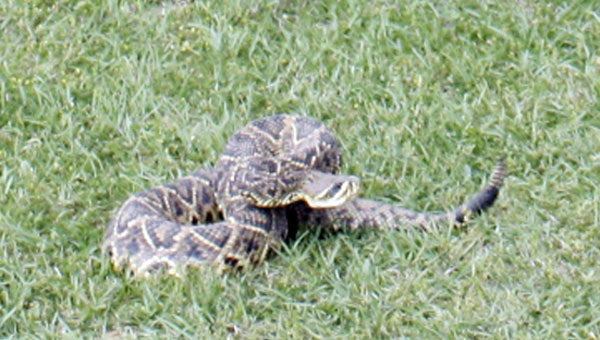Rattler may qualify for protection
Published 12:02 am Thursday, May 10, 2012
A wildlife partnership seeking to protect the Eastern Diamondback rattlesnake accomplished a great feat Wednesday when the U.S. Fish and Wildlife Service announced that the snake might qualify for the Endangered Species Act.
Last August, the group filed a petition to protect the animal under the act, citing habitat destruction and “rattlesnake roundups” like the Opp Rattlesnake Rodeo as reasons for the demise of the snake.
The filing is in response to the group’s petition.
Local biologist Mark Bailey said he believes the Fish and Wildlife Service has more species that are in trouble, but isn’t opposed to the measure.
“The rattlesnake population is declining,” he said. “They are absent from large portions of their habitat, but are probably not yet on the verge of extinction. I am certainly not opposed to the listing. They are in trouble and listing may indeed be warranted, but I can think of other species I might put ahead of the diamondbacks in terms of priority: Southern hognose snake, gopher frog and Eastern kingsnake.”
The Center for Biological Diversity’s reptile and amphibian specialist Collette Adkins said the diamondbacks are “rapidly disappearing.”
“Eastern diamondbacks are rapidly disappearing all across the southeastern United States, and in some states they’ve more or less vanished,” she said. “They need Endangered Species Act protection to survive. The Endangered Species Act has a nearly perfect record of saving species on the brink of extinction – it’s our best tool for saving diamondbacks.”
The snake was once abundant in longleaf pine forests such as the Conecuh National Forest, but only 2 to 3 percent of the species’ original habitat still exists.
Bailey agreed that the No. 1 cause of the decline is the loss of habitat.
“They are being pushed back everywhere,” he said. “Although, they do best in natural longleaf pine forest, they may occur in lower numbers in some other habitat types.”
The state conservation department already considers the snake a species of concern.
Dr. Bruce Means, president of the Coastal Plains Institute and Land Conservancy, said the loss of longleaf pine habitats threatens the rich biodiversity of the coastal plains.
“Protecting remaining patches of longleaf pine from unsustainable human development will help the diamondback and other species that depend on these forests, such as the red-cockaded woodpecker, indigo snake and gopher tortoise,” he said.
The group also maintains there are no limits on the rattlesnake harvest and that the animals continue to be targeted for their skins and for sport, and said that in Alabama and Georgia, “rattlesnake roundups” such as the Rattlesnake Rodeo target the snakes.
Rodeo officials have maintained that they disagree with the numbers the organization basis their claims.
“Some of the data (these organizations) have pertain to the Rattlesnake Rodeo,” Opp city planner Don Childre said previously. “It says that we had close to 400 snakes in the 1970s, and then we only had 25 the first year the city had the rodeo. That’s because I told the mayor I didn’t want to deal with 300 to 400 rattlesnakes. We could get 300 if we wanted them.”
For the most recent rodeo, officials reported the week before the rodeo that they only had around 14 snakes in the snake trailer outside of city hall, but more did come in before the rodeo weekend.
Rodeo officials attributed the warm winter to the number of snakes local hunters were able to find in burrows around the county.
The U.S. Fish and Wildlife Service’s decision triggers a full review of the snake’s status, which must make a final decision on Endangered Species Act protection within a year.
The Eastern Diamondback will likely be added to the list of candidate species that need protection, but not until the service works its way through a backlog of species already under consideration for listing.




